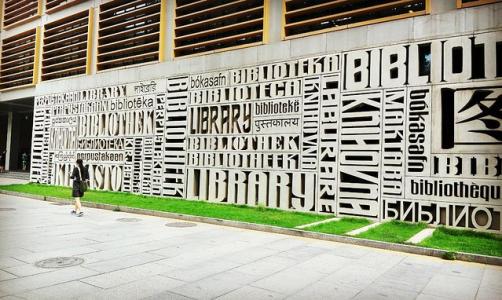- 模板介绍
- 下载记录
- 用户评价
|
六十年团结奋进。 |
These 60 years have seen solidarity and enterprising spirit of the people in Tibet. |
|
经过民主改革,西藏各族人民与全国人民一道,同心同德、和衷共济,建立起平等、团结、互助、和谐的民族关系。 |
Thanks to democratic reform, the ethnic peoples of Tibet and the rest of the country have worked together with one heart to develop ethnic relationships characterized by equality, unity, mutual support and harmony. |
|
在维护国家统一、反对分裂的斗争中,西藏各族人民紧密团结在党中央周围,经受住了各种困难和风险的考验,铸牢了中华民族共同体意识。 |
In the fight to guard national unity and oppose separatism, the people of Tibet have closely followed the leadership of the Central Committee of the Communist Party of China (CPC) in the face of all forms of hardship, challenge, and test, reinforcing the communal strength of the Chinese nation. |
|
六十年伟大跨越。 |
These 60 years have seen a great leap of social progress. |
|
在中国共产党的坚强领导下,西藏社会实现了由封建农奴制度向社会主义制度的历史性飞跃,西藏发展实现了由贫穷落后向文明进步的伟大跨越。 |
Under the strong leadership of the CPC, Tibet has been able to transform from a society under feudal serfdom to socialism, from poverty and backwardness to civility and progress. |
|
随着中国特色社会主义进入新时代,在以习近平同志为核心的党中央坚强领导下,西藏各族人民正与全国人民一道,为实现中华民族伟大复兴的中国梦阔步前进。 |
As Chinese socialism has entered a new era, the ethnic peoples of Tibet, led by the CPC Central Committee with Xi Jinping as the core, are working together with the people of the rest of the country to realize the Chinese Dream of national rejuvenation. |
|
一、黑暗的封建农奴制度 |
I. Feudal Serfdom: A Dark History |
|
历史上,西藏长期实行政教合一的封建农奴制。 |
For centuries Tibet was ruled by feudal serfdom under theocracy. |
|
这一制度一直延续到1959年西藏民主改革前,上百万农奴处于被剥削被压迫的境地。 |
Millions of serfs were subjected to cruel exploitation and oppression until democratic reform in 1959. |
|
——三大领主剥夺了农奴的一切权利 |
– Serfs deprived of all rights by the three major estate-holders |
|
旧西藏法律将人分为三等九级,明确规定人在法律上的不平等地位,农奴的人权被领主阶级所剥夺。 |
The laws of old Tibet divided people into three classes and nine ranks, legalizing the unequal status of different groups and allowing the estate-holders to deny all human rights of their serfs. |
|
地方政府完全被官家、贵族和寺庙上层僧侣(又称“三大领主”)所掌控,各级官员由上层僧侣和世俗贵族担任。 |
In the government, controlled by the three major estate-holders (government officials, nobles, and upper-ranking lamas in monasteries), all levels of official came from the families of high-ranking lamas and nobles. |
|
有的大贵族官员的子弟一出生就获得四品官阶,十七八岁就可出任政府重要职务。 |
Children of major noble families, upon birth, would automatically obtain the fourth-highest official rank, and they could take key positions in government when they were 17 or 18 years of age. |
|
中小贵族的子弟经俗官学校学习后,即可进入地方政府任职。 |
Children from middle-ranking and lesser noble families could also take up official positions in government after spending some time studying at official training schools. |
|
僧官大部分由贵族出身的喇嘛担任。广大农奴处于社会最底层,毫无地位可言。 |
Most monk officials were lamas from noble families, while serfs, who constituted the vast majority of the Tibetan society, struggled hopelessly on the very bottom rung of society. |
|
——三大领主共同掌握对农奴生杀予夺大权 |
– The serfs’ life and death in the hands of the three major estate-holders |
|
三大领主以野蛮、残酷的刑法维护封建农奴制度,他们可以在自己的势力范围内设置司法机构和法庭,除官府所设监狱外,每一个较大寺庙和贵族都设有监狱或私牢,可以自备刑具,私设公堂,惩罚农奴,进行判决、鞭挞、拷问,给农奴戴上镣铐、枷锁。 |
The three major estate-holders applied every means to maintain feudal serfdom, with cruel and barbarous laws and punishments imposed by judicial organs and courts set up within their scopes of influence. Apart from jails set up by the government, there were penitentiaries and private jails run by large monasteries and aristocrats where instruments of torture were kept and private tribunals were held. They cast verdicts, flogged and tortured serfs, had them chained and shackled. |
|
大量藏文档案清晰记载着,割舌、割鼻、戴石帽、剁手足、剜眼、抽筋、剥皮、投水,甚至投入蝎子洞等几十种酷刑。 |
Volumes of documents written in Tibetan testify to the savage punishments meted out to serfs, such as cutting off the tongue, nose, hands and feet, wearing stone hat, gouging out the eyes, pulling out tendons, skinning, drowning, and even feeding them to scorpions. |
|
拉萨大昭寺北面的“朗孜厦”,曾经是旧西藏拉萨的司法机构,被称为“人间地狱”,常借实施酷刑和屠杀之机,为噶厦地方政府和寺庙中的上层人士提供“念心咒”用的祭品,如人头、人皮、人肉、人心、人肠等。 |
The Snang Rtse Shag, located to the north of the Jokhang Temple in Lhasa, used to be the judiciary of old Tibet. Infamously known as a “living hell”, this was where serfs were tortured and slaughtered at will to supply the upper class of the Kashag (cabinet) regime and high-ranking monks with such horrible offerings as human head, skin, flesh, heart, and intestines, which were considered “necessary” when chanting certain scriptures. |








